Mastering Navigation: Finding True North Outdoors


Intro
When it comes to outdoor adventures, being able to determine which way is north can be an absolute game changer. Whether you're out for a few leisurely hours on the water or embarking on a multi-day hiking journey, the ability to orient yourself properly is vital to safety and enjoyment. Not only does directional awareness enhance your navigational skills, but it can also reduce potential dangers you might encounter.
Navigating by the stars or using a compass might seem as ancient as the hills, but modern adventurers still find these methods invaluable. Then there's technology—the GPS devices and smartphone apps that have revolutionized how we find our way. This article dives into various techniques, tools, and personal experiences that can help you sharpen your navigation skills.
As you read on, prepare to explore a variety of ideas from simple, straightforward methods to the more sophisticated gear that can help ensure you're never left wandering off the beaten path.
Understanding the Importance of Direction
Understanding the direction is not just about knowing which way to go; it is a fundamental skill that can significantly enhance both safety and enjoyment, particularly in outdoor activities and watersports. Without a clear sense of direction, even the most seasoned adventurers might find themselves in precarious situations, potentially leading to disorientation or perilous accidents.
The relevance of knowing north cannot be overstated. In many cases, determining the northern direction serves as the initial building block for navigation. It's like having a compass without any competing pointers; everything can then revolve around that central point. A sound understanding of cardinal directions also helps individuals to better communicate their plans and decisions with their peers, which is crucial in group settings.
Why Knowing North Matters
Knowing which way is north becomes paramount when you are out on the water or traversing unknown terrain. It acts as a stabilizing factor. For instance, while sailing, your boat's course often relies on consistent wind patterns which can change. If you have a good grasp of north, not only do you steer in the intended direction, but you also can leverage the wind's position to optimize speed—keeping your journey safe and effective.
Furthermore, understanding which way north lies can prevent unnecessary detours. You might not realize it, but being slightly off-course can add hours to your journey. This knowledge can even save energy, allowing you to focus more on the adventure and less on worries of being lost or taking the long way home.
The Role of Navigation in Watersports
In the thrilling realm of watersports, navigation harnesses both skill and intuition. The ability to identify north plays a critical role in activities such as kayaking, windsurfing, or even fishing. Each of these activities demands a solid understanding of currents, weather patterns, and geographical features.
Take, for example, a kayaker who is paddling in a vast lake. Knowing north helps them find landmarks that may be otherwise difficult to spot amidst all the waves and reflections on the water's surface. Also, wind surfers depend heavily on their orientation relative to land and water currents; every second counts in catching the right wind and maximizing their enjoyment on the water.
The nuances of navigation don't stop with understanding the directions. They also involve knowing local environments, including changes in the landscape over seasons, and how specific conditions may affect your chosen activity. In some cases, currents may shift or obscure land marks, and keeping track of north allows one to anticipate these changes intelligently and adjust swiftly.
As such, an adept navigator stands a better chance of not only surviving but thriving in their watersport endeavors. The importance of direction permeates through every aspect of outdoor activities, laying the foundation for a holistic experience.
Natural Indicators of North
Understanding how to determine the direction of north using natural indicators is not just an exercise in skill; it’s a profound way to reconnect with the world around us. This aspect of navigation elevates the experience for outdoor adventurers, especially those engaging in watersports where knowing one's direction can mean the difference between a pleasant outing and an unsettling experience. The natural environment offers numerous cues, whether they be celestial bodies, vegetation patterns, or unique landmarks. Knowing how to read these signs empowers enthusiasts to navigate their surroundings effectively.
Using the Position of the Sun
Sunrise and Sunset as Reference Points
The position of the sun at rising and setting is a classic navigational tool, particularly important for those who find themselves on water or in open areas where traditional landmarks may be scarce. When the sun rises, it emerges in the east and sets in the west; this predictable cycle provides a reliable framework for orienting yourself. Adventurers can use the brilliance of the dawn to gauge where north lies. Additionally, as dawn breaks, the atmosphere often undergoes a subtle glow, which many find uplifting when planning their day.
However, while this method is poignant, it’s worth noting that the exact orientation shifts slightly through the seasons. In the summer, the sun travels a higher arc in the sky, compared to winter when it is lower. This slight variation can influence how one perceives east and west, especially if one is not paying attention to seasonal changes.
"The sun always shines on the right path, if you know where to look."
Solar Movement Throughout the Day
More than just the start and end of the day, the sun's movement throughout the day serves as an essential tool for those navigating unfamiliar terrains. During the midday hours, the sun is at its zenith, and for those in the Northern Hemisphere, it casts shadows toward the north. Observing how shadows behave can provide clearer direction. For instance, a shadow cast directly south can be an immediate visual cue of where to head.
This reliance on solar positioning is beneficial because it requires minimal tools—just your awareness and the sun overhead. However, one should be cautious of over-reliance, as cloudy days can obscure the sun, making navigation an educated guess rather than a precise technique.
Identifying Stars for Navigation
The North Star's Significance
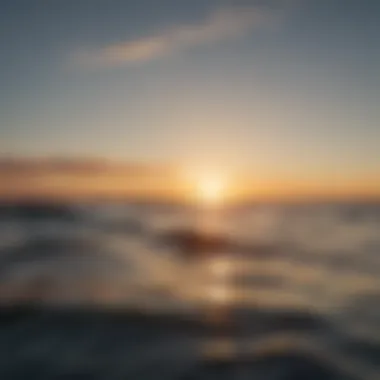
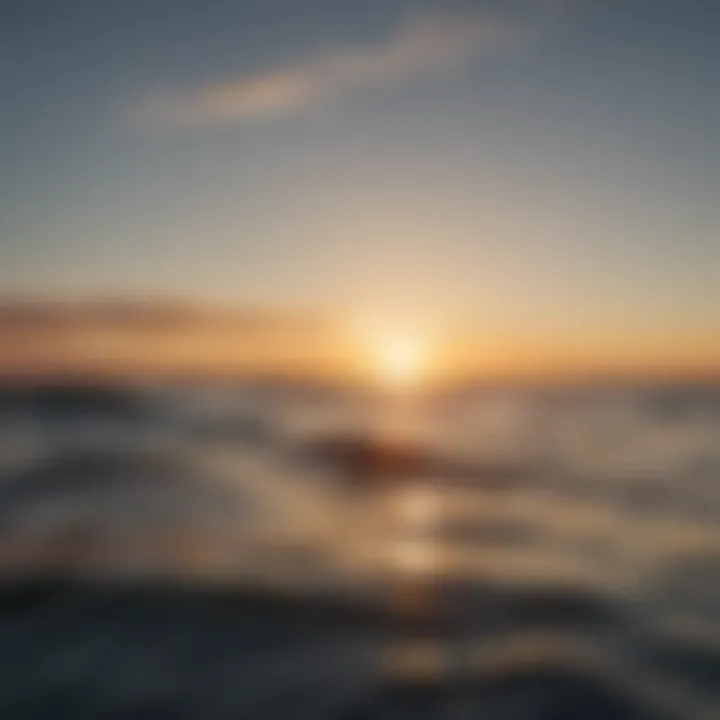
In the realm of night navigation, few things are as iconic as the North Star, or Polaris. This star is almost directly aligned with the Earth’s rotational axis in the Northern Hemisphere, making it a crucial reference point for navigation. Its significance stems from its constancy in position—unlike other stars that seem to move across the night sky, Polaris remains nearly fixed.
Its heights in the night sky correspond closely with latitude, allowing adventurers to gauge their north-based bearings based on how high it is above the horizon. For anyone navigating waters at night, this star is a beacon of reliability, providing both guidance and assurance. The major drawback, however, is that it is often less visible in regions closer to the equator or when obstructed by local geography.
Constellations for Directional Guidance
Beyond the North Star, several constellations are worth noting. The Big Dipper, part of Ursa Major, serves as a great navigational tool. Its pointer stars can direct you directly toward Polaris, acting as a compass in the sky. Other constellations, like Orion, glow prominently and help navigate through the northern hemisphere during certain seasons.
Using these constellations can be beneficial for continuous learning, as identifying them can deepen one's appreciation of the night sky. They act as both a guide and a storyteller, connecting adventurers to the stories of ancestors who depended on them for survival. The downside is that requiring clear skies and some astronomical knowledge can limit their effectiveness for beginners in navigation.
Terrain and the Environment
Tree Growth Patterns
In heavily wooded areas, observing the growth patterns of trees can be a handy method to find direction. Tree growth often leans toward the sun, resulting in thicker foliage on the southern sides, particularly in the northern hemisphere. This can give hikers and adventurers cues for where north is, aiding in orientation. Certain botanists have studied the phenomenon, noting the higher density and larger foliage on the south side in many species.
This tactic is rather low-tech and simple to understand, which is beneficial for adventurers seeking natural navigational skills. However, it's also important to note that terrain disturbances or differences in elevation can affect tree growth, making this technique less reliable in mixed or thickly forested areas.
Landmarks as Reference Points
Visible landmarks, from hills to manmade structures, constitute a straightforward method for navigation. These can include mountain peaks, large rocks, or prominent buildings, providing visual cues that can help orient one’s path. For instance, spotting a well-known mountain range can be reassuring amidst a vast ocean or open water, guiding decision-making.
Using landmarks allows for immediate and clear reference points, making it a go-to choice for many on outdoor adventures. The downside to relying heavily on landmarks is that it can be somewhat situational; as weather changes or visibility declines, the very guides you rely on can suddenly become obscured.
Tools and Techniques for Determining North
Understanding how to pinpoint the north direction is vital for every adventurer. The challenge here lies in navigating various landscapes, where conventional signs might not always apply. The tools and techniques available to determine north can enhance one’s confidence, ensuring safety and the enjoyment of activities in the great outdoors. From conventional compasses to the latest smartphone applications, a variety of aids serve as essential companions for any water sport enthusiast or outdoor adventurer.
Using a Compass
Understanding Compass Mechanics
Compasses operate on a simple yet powerful principle: they align with Earth's magnetic field. This creates a reliable way to establish orientation. The most notable feature of a compass is its needle that points towards magnetic north. In reference to this compass, knowing true north and magnetic north can make a considerable difference. Magnetic declination— the angle difference between magnetic north and true north— varies by location and can lead to misdirection if not accounted for. This highlights why mastering the compass is not just beneficial but necessary for effective navigation.
Practical Tips for Effective Use
For optimal use of a compass, a few straightforward tips can go a long way. First, always hold the compass level to allow the needle to float freely. It’s surprising how many folks forget this while busy navigating. Next, orient your body so the needle aligns with the north mark. Keeping the compass away from metal objects or electronics prevents erratic readings. This simple practice can save one from heading in the wrong direction when every minute counts in outdoor training or competitions.
Smartphone Applications
Popular Navigation Apps
With advancements in technology, numerous smartphone applications now provide reliable navigation assistance. apps like Google Maps, Waze, and MapMyRun are popular among both casual and serious outdoor enthusiasts. What’s appealing about these applications is their ability to integrate various data points— from GPS signals to real-time traffic updates. Balancing ease of use and comprehensive features, this makes them a favorite. They often present a visual map that simplifies the understanding of one’s surroundings. Given that many people are already familiar with smartphones, it’s a natural choice for tech-savvy navigators.
Combining Technology with Traditional Methods
In an era dominated by screens, melding traditional navigation techniques with modern technology proves to be advantageous. For instance, knowing how to use a compass alongside a GPS app can offer a safety net. If the battery dies or the signal falters, traditional practices can fill in the gaps. By being adept in both realms, navigators ensure they remain grounded, literally and figuratively. It’s this combination that has empowered a new generation of navigation enthusiasts to venture farther with confidence.
GPS Devices and Systems
Advantages of GPS in Watersports
GPS devices have taken navigation to the next level. Their precision can pinpoint one’s location within a matter of meters. Adventurers relying on GPS can benefit from pre-loaded maps specific to coastal or riverine areas, providing crucial data on currents, reefs, or no-wake zones. The convenience of real-time tracking ensures that one can always return to a desired point, which is especially valuable during adrenaline-pumping watersport activities. The ability to plan routes ahead of time ensures a smoother journey with reduced risk.
Limitations and Considerations
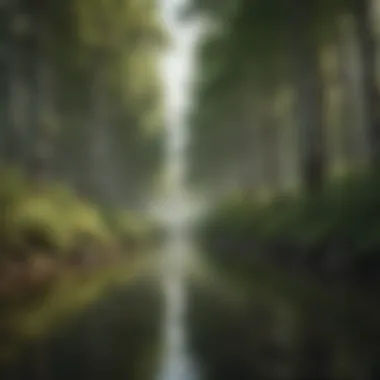
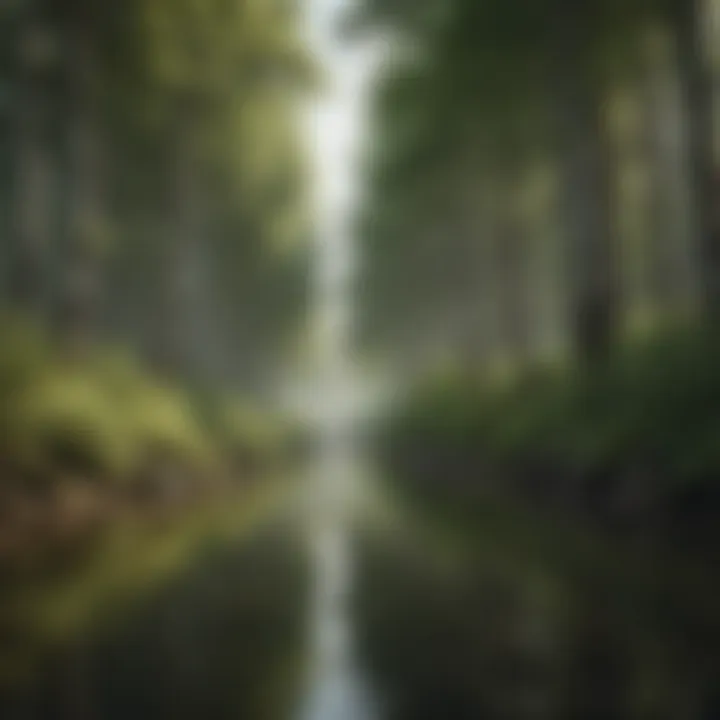
However, it’s essential to acknowledge the limitations of GPS devices. For instance, dense forests or urban environments with high buildings can disrupt signals. Battery life can also pose a challenge, particularly during long excursions. Additionally, relying solely on technology may lead to complacency when traditional skills go unused. Recognizing these drawbacks can inspire navigators to appreciate a broader skillset, maintaining a balance between dependence on devices and honing natural navigational instincts.
Practical Applications of Directional Knowledge
Understanding the direction of north is not merely a theoretical exercise; it has profound practical applications, especially for those engaged in watersports and outdoor activities. Knowing how to determine north can significantly enhance the safety and efficacy of your adventures. Directional awareness is a skill that goes beyond the compass, extending into the realms of planning and risk management.
When evaluating the importance of directional knowledge, a few key elements come to light: weather conditions, navigation techniques, and safety protocols in diverse environments. Whether you're paddle boarding on a serene lake or surfing in the ocean, the implications of misjudging your bearings can be significant. This section aims to explore how directional awareness can inform and improve decision-making in various aspects of watersport activities.
Planning Watersport Activities
Choosing Launch Sites
Choosing the right launch site is crucial for a successful and safe watersport outing. A well-chosen launch site not only facilitates easy access to the water but can also influence your overall experience. Factors such as wind direction, current strength, and nearby hazards are significant when selecting a site. Understanding the local geography and tidal patterns should guide your choice.
One notable characteristic of launch sites is their proximity to emergency services, should the need arise. This becomes particularly important when engaging in activities that are physically demanding or take place in unpredictable aquatic conditions. Easy access to safety resources is a strong advantage when planning your activities.
However, there are pitfalls. Some sites may be isolated or have limited rescue options, which could delay response times in emergencies. Moreover, busy public launch sites can present risks due to heavy traffic, which increases the potential for accidents.
Understanding Currents and Tides
An essential element of any watersport is comprehension of currents and tides. Understanding these natural forces not only boosts your confidence as an athlete but can also greatly enhance your safety. Currents can turn a seemingly placid day on the water into a harrowing ordeal, leading you far from your intended path.
One key factor to keep in mind is the tidal cycle, which changes the landscape every few hours. This rhythm can either aid your journey or create unforeseen obstacles.
The unique feature of knowing currents is that they can assist in travel; a boat can be 'caught' in a current to speed the journey or 'against' it, meaning careful timing could save the day. Not being aware of these changes, however, can lead you to awkward positions where a favorable launch now becomes a struggle against the flow.
Safety Considerations
Navigating in Poor Visibility
Poor visibility can occur due to dense fog, heavy rain, or even storm clouds. It's a critical aspect that necessitates heightened awareness and adaptability. Navigating under these conditions is complicated but essential for maintaining safety.
When visibility wanes, one key characteristic comes into play: reliance on sound. Many experienced navigators find that listening to waves, wind, and other environmental sounds helps mitigate the visual loss. The tailored use of your other senses can create a solid frame of reference, allowing you to maintain a general direction even when landmarks are obscured.
Still, this approach comes with its own set of drawbacks. Relying too heavily on sound can be misleading, as the noise of the water may misrepresent faster currents or nearby obstacles. This could lead to more dangerous situations if the surroundings are not carefully assessed.
Emergency Situations and Navigation
In emergency situations, every second counts, making it essential to have a reliable navigation strategy. The need to navigate efficiently during crises such as equipment failure, sudden storms, or even personal injuries cannot be understated.
One primary characteristic of effective emergency navigation is adaptation. The ability to adjust your planned route based on real-time conditions is crucial. For instance, knowing nearby landmarks, their distances, and the safest paths to access them can serve as a lifeline during emergencies.
Additionally, the unique stress of emergencies can cloud judgment, leading to poor navigational decisions. Hence, having a clear mental map of escape routes and reliable communication devices becomes vital. As much as tools can aid navigation, familiarity with the surroundings and real-time assessment can often prove even more beneficial.
"Knowing the lay of the land isn’t just about getting back—it's about keeping you and your companions safe while exploring the wonders of the water."
Overall, applying directional knowledge effectively translates into safeguarded experiences in the world of watersports. Every activity, from planning where to launch to how to navigate through less than ideal situations, stands to benefit from a strong grasp of direction.
Cultural and Historical Perspectives on Navigation
Navigating through waters has been a fundamental aspect of human existence, shaping civilizations and exploring new realms. Understanding cultural and historical perspectives on navigation provides valuable insights into how different societies have approached the challenge of finding their way, particularly where the natural landscape meets the sea. Ancient and modern techniques have evolved, but their legacy continues to influence navigational practices today. Exploring these elements not only educates adventurers about historical context but also enhances their appreciation for contemporary navigational methods.
Ancient Techniques of Navigation
Indigenous Navigational Methods
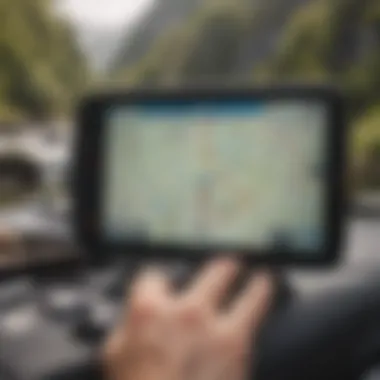
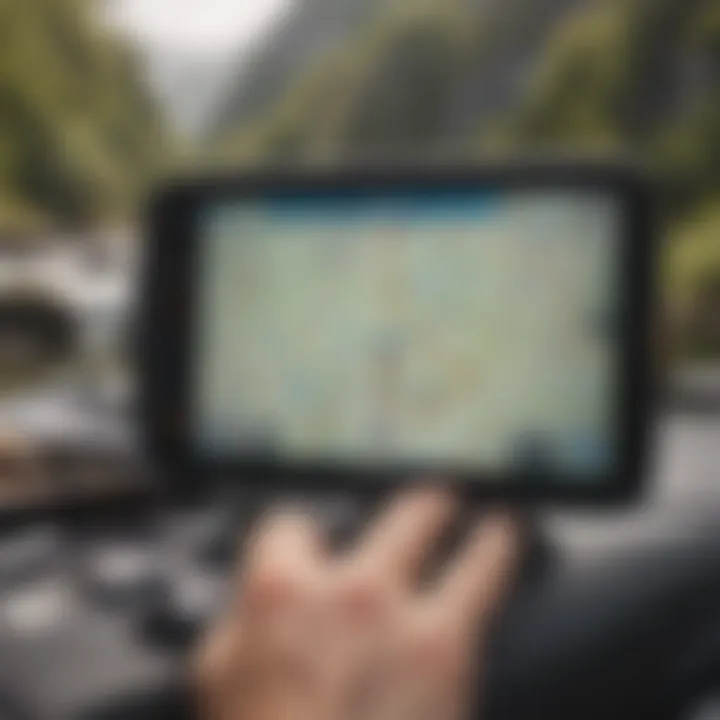
Indigenous navigational methods are deeply embedded in the traditions of various cultures, showcasing a harmonious relationship with nature. One remarkable characteristic of these techniques is their reliance on the environmental cues such as the stars, ocean currents, and winds. Indigenous navigators often utilized the movement of celestial bodies, as well as animal behavior and vegetation patterns, to chart their course. This connection to the natural world has traditionally been a beneficial aspect for understanding direction without modern tools.
A unique feature of indigenous navigation is the communal knowledge passed down through generations, which makes it a vibrant part of cultural heritage. The advantage here is a profound understanding of the environment, which instills adaptability in navigating challenging conditions. However, these methods may require significant time to master, calling for intense practice and dedication.
Historical Significance of Celestial Navigation
Celestial navigation has a storied history, notably utilized by ancient mariners. The beauty of this method lies in its simplicity; navigators identified key stars, such as Polaris, to determine their latitude and often relied on astrolabes or sextants to aid in their calculations. This approach was essential for long ocean voyages, especially before the advent of modern technology.
Its significance can’t be understated. Celestial navigation creates a connection between mariners and the sky, fostering a sense of wonder and understanding of the universe. Moreover, it represents a form of scientific inquiry that transcends cultural boundaries. The unique advantage of celestial navigation is its all-encompassing nature—it can be performed anywhere on Earth, without the need for advanced tools. Yet, it involves complex calculations, which may pose a challenge for inexperienced navigators.
Modern Innovations in Navigation
The Evolution of Navigational Tools
The evolution of navigational tools has been nothing short of revolutionary. From the early compasses to sophisticated GPS devices, the journey showcases human ingenuity in overcoming navigational challenges. A key characteristic of this evolution is the integration of technology with traditional methods, allowing for improved accuracy and efficiency. This blend is particularly beneficial for modern adventurers who demand both reliability and simplicity in navigation.
The unique feature of contemporary navigational tools stands in their adaptability. For instance, smart devices often provide real-time data that can assist in making informed decisions while navigating waters. However, a potential disadvantage emerges from over-reliance on technology; if an electronic device fails, the navigator may find themselves lost without fundamental skills.
Future Trends in Watersports Navigation
Looking forward, future trends in watersports navigation seem to prioritize enhancing user experience through advanced technologies and data integration. Features like augmented reality and artificial intelligence are becoming more prevalent, offering exciting possibilities for navigation. A key characteristic of these trends is their potential to personalize navigational experiences, taking into account individual skill levels and preferences.
These innovations can provide various advantages, such as improved safety through real-time hazard alerts or optimized route planning based on conditions. However, being heavily technology-focused could lead to the risk of disconnecting from traditional navigation skills, risking the loss of the holistic understanding of one’s environment that exceptional navigators have cultivated through the ages.
"To navigate is to take a leap of faith into the unknown, guided by the wisdom of those who have traveled before us."
By examining cultural and historical perspectives on navigation, today’s adventurers can not only enrich their understanding but also develop a more profound respect for both the ancient methods that laid the groundwork for modern navigation and for those contemporary innovations that continue to evolve.
Enhancing Personal Navigation Skills
Knowing how to find north isn't just a cool party trick—it's foundational for anyone serious about watersports and outdoor adventures. Enhancing personal navigation skills goes beyond just being able to point in the right direction; it encompasses a mixture of knowledge, practice, and intuition that can substantially improve one’s safety and enjoyment on the water. This skill set allows individuals to read the environment, assess their surroundings, and make informed decisions, avoiding complications that might arise from getting lost.
Training and Certification
Navigational Courses Available
When we think about boosts to our navigation skills, enrolling in navigational courses pops up as a solid choice. Many organizations offer programs tailored for both new paddlers and seasoned sailors, including the American Canoe Association and the Royal Yachting Association. The key characteristic of these courses is their structured approach to teach not only the basics of direction-finding but also complex concepts like map reading, tide calculations, and even emergency navigation strategies.
Unique to these courses is the hands-on practice they often include, providing participants with the chance to use tools under the supervision of qualified instructors. While these classes can be time-consuming and may require some financial investment, the skills gained are invaluable, particularly for those planning to spend extensive time navigating in unpredictable environments.
Benefits of Certification
Certification often accompanies a navigational course and can significantly enhance one's credibility as a navigator. For those venturing into watersports, having a certification speaks volumes; it shows that the individual has made a commitment to understanding navigation principles and safety measures. This is especially beneficial for instructors and guides, who need to establish trust and demonstrate competence to their clients.
One unique feature of these certifications is that they usually include practical assessments, which can have advantages and disadvantages. On the upside, it offers a concrete measure of one’s skills, providing a confidence boost. However, some may find the pressure of assessments daunting, possibly detracting from the joy of learning.
Experience and Practice
Practical Exercises for Skill Development
No matter how many courses you complete, hands-on practice is what truly solidifies navigation skills. Practical exercises for skill development can range from setting simple navigation goals in controlled outdoor settings to participating in more adventurous activities like orienteering or competitive sailing. The key characteristic here is the emphasis on applying learned skills in real-world scenarios, which in turn reinforces memory and understanding.
One benefit of such exercises is the immediate feedback learners receive. Navigating under varying conditions and terrains sharpens intuition and builds confidence. However, getting lost during practice can be a tough pill to swallow, turning what should be an exciting experience into a frustrating one.
Learning from Experienced Navigators
Observing and learning from those with extensive experience can greatly enhance your own navigation skills. Many seasoned navigators are more than willing to share their insights, often accumulating fascinating stories and techniques that the average course doesn’t cover. This informal form of education encompasses a broad spectrum—from interpersonal navigation tips to interpreting environmental cues effectively.
Moreover, the unique feature here is the mentoring element that comes from having a guide or a more knowledgeable partner during outings. This can create a supportive learning environment. However, relying solely on another person can be problematic; individuals risk missing valuable lessons that come from problem-solving on their own.
To wrap this all up, enhancing personal navigation skills is multi-faceted: it involves formal training, practical experience, and ongoing learning from others in the field. Each component contributes to a well-rounded navigator who is better prepared to handle the adventures and challenges that come in the great outdoors.















